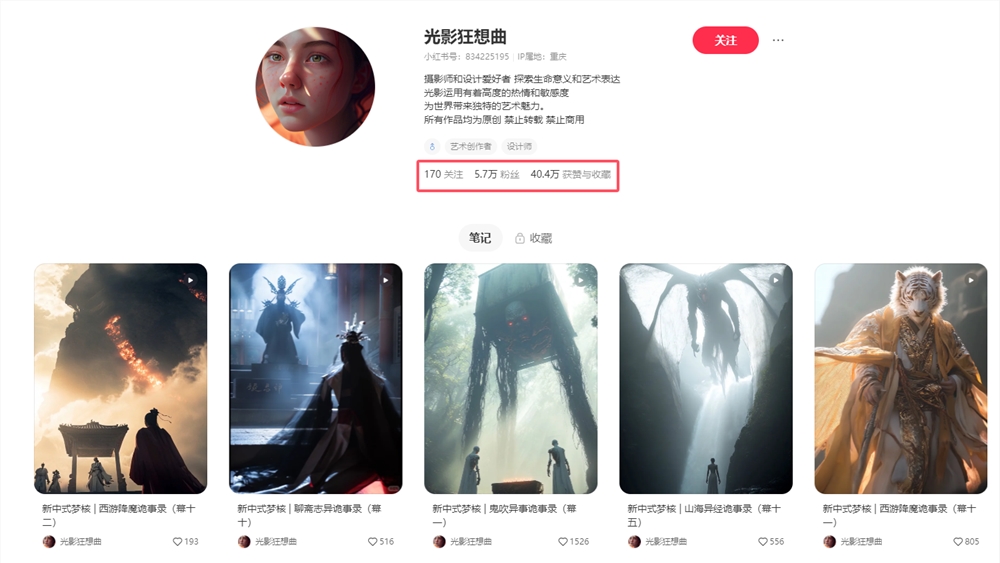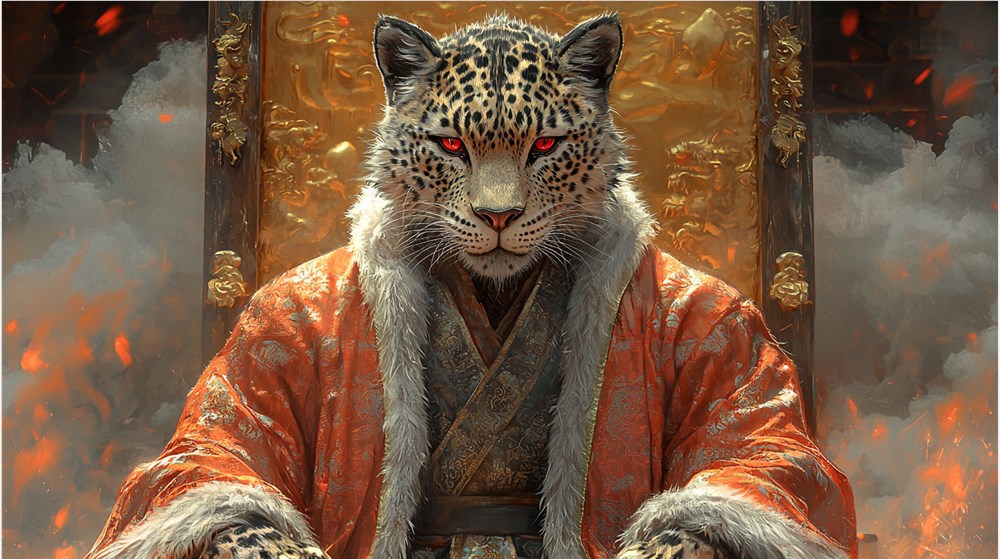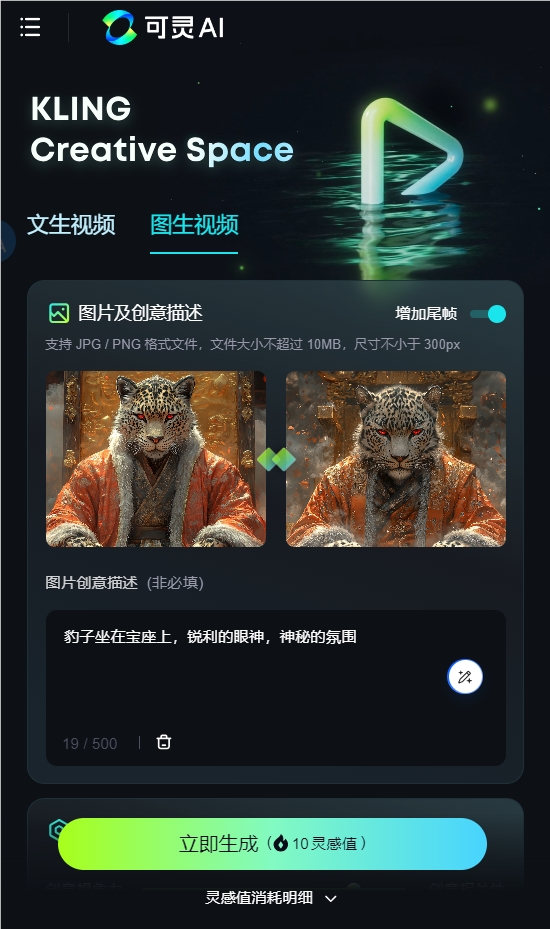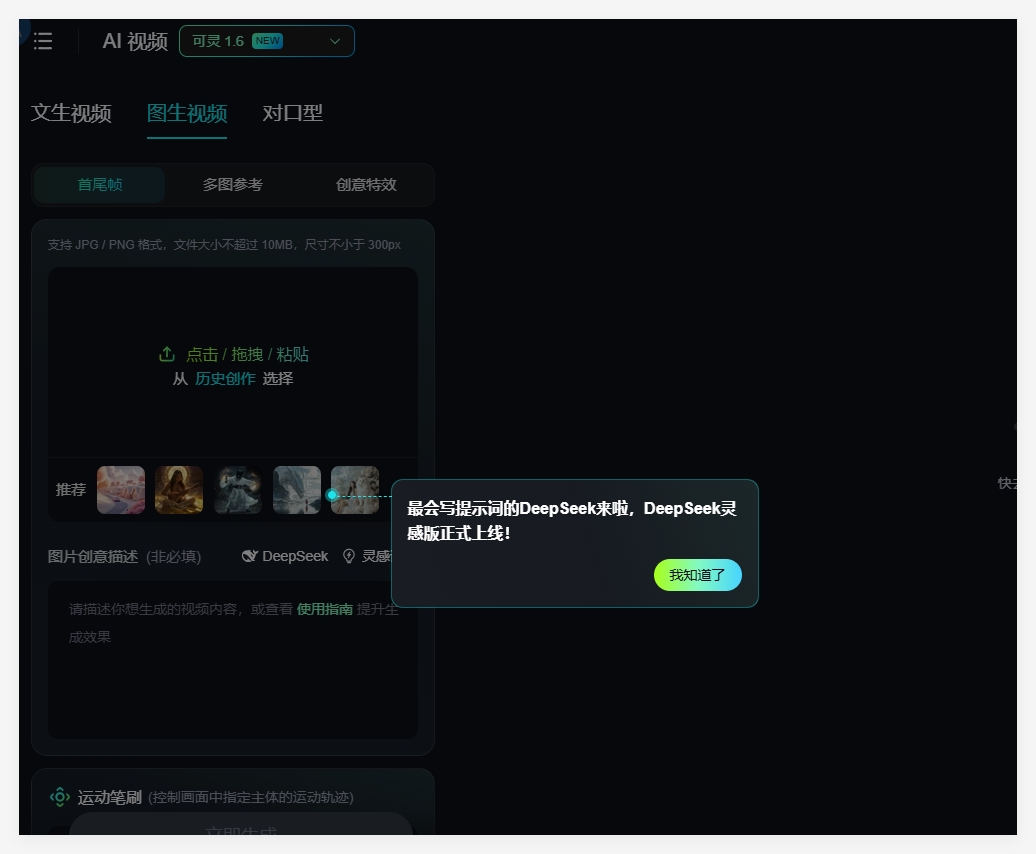Today, China's first 3A game masterpiece, "Black Myth: Wukong," was officially released. In just one month, its pre-sale revenue has exceeded 400 million, indicating its immense popularity.
The "Journey to the West" series has always been beloved by the masses. The success of "Black Myth: Wukong" has also sparked a new wave of interest in the "Journey to the West" series.
For instance, on Xiaohongshu, a blogger named "Fantasy of Light and Shadow" posted a new Chinese-style dream core piece about "Journey to the West," which received over 8,000 likes and more than 1,500 collections. Currently, the blogger has gained 57,000 followers by creating such mythological videos with Kelin.

Previously, the blogger had posted many exquisite images and articles, but the number of likes was negligible. It wasn't until using Kelin to generate mythological videos that the path to rapid growth in followers began.
It can be seen that the later works of "Fantasy of Light and Shadow" are mostly centered around classic mythological stories such as "Liaozhai," "Journey to the West," and "Shan Hai Jing," with an artistic style of "New Chinese Dream Core." These works have considerable likes and shares, and many users exclaim that these visuals perfectly match their fantasies of fantasy dramas.

What is New Chinese Dream Core?
New Chinese Dream Core is an emerging visual art style that presents a nostalgic and dreamy approach, creating emotionally resonant and surreal aesthetic experiences through images, videos, and other media. This style often uses elements like old residential buildings, furniture, and decor to create an atmosphere that is both familiar and strange, giving a sense of time travel. Chinese Dream Core works can evoke a longing for past memories and are sometimes seen as a cyber sanctuary, providing emotional solace for those feeling "trapped" in the real world.
So, how do you create such videos? Today, AIbase will walk you through the process.
Making these videos is actually quite simple, in three steps:
Draw images with a mysterious atmosphere
Convert images to video with Kelin
Edit and add music
Here are the specific steps:
1. Drawing
By observing, you can notice that dream core works with mythological stories have a characteristic: a hazy sense of mystery.
To draw such images, you can include keywords like "shrouded in fog," "white atmosphere," "mist," "mystery," "epic," and "realism" in your prompts.
PS: There are many tools for drawing, and you can choose your preferred one. Here, AIbase directly uses MJ for drawing. (If you don't have MJ, you can use Ji Meng or FLUX.1, which also produce good results.)
For example, if AIbase wants to draw a leopard demon, the prompt would include a description of the leopard demon's appearance plus keywords like "shrouded in fog," "white atmosphere," "mist," "mystery," "epic," and "realism." This results in an image like the one below, which is saved for later use. If you want to use the first and last frames for image-to-video conversion, you can save two similar images for later use.

2. Image to Video
Visit the Kelin official website: https://top.aibase.com/tool/keling-ai
Drag the previously saved image into Kelin to generate a video. Here, I chose two similar images and tested the effect with the first and last frames. After uploading the first and last frames, simply input the prompt and click generate.

Here's the video effect:
The effect looks decent, with a sense of oppression immediately apparent. AIbase is satisfied with this result and downloads it for later use.
For comparison, AIbase also used Ji Meng to generate a video, with similar steps of uploading the first and last frames and inputting the prompt, then clicking generate.
Ji Meng official website: https://top.aibase.com/tool/jimengai

Here's the generated effect:
Comparing the effects of the first and last frames, both Kelin and Ji Meng have their strengths and are quite stable, with no significant deformation issues. You can choose the one you find more comfortable to use.
3. Editing
After creating multiple scenes with the above two steps, drag them into video editing software and add appropriate background music.

Here's the video effect:
That concludes today's tutorial. For more previous tutorial content, you can click here to view: https://www.aibase.com/course








